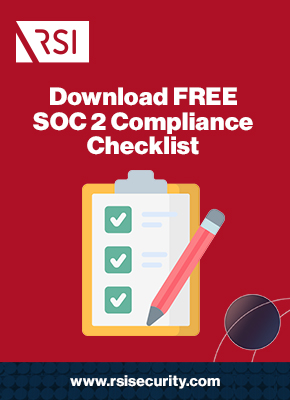Preparing for a SOC 2 audit? To figure out which type you need, ask the following questions:
- Do you need SOC 2 reporting at all?
- Would a SOC 2 Type 1 report suffice?
- Do you need a full-fledged SOC 2 report?
- Could you benefit from having both reports?
Do You Need a SOC II Report?
To begin with, there are several System and Organization Controls (SOC) audits organizations can conduct, so many decision-makers are posed with questions about which is the right fit.
SOC 2 or SOC II reports are primarily for service organizations, including but not limited to IT, cloud, and other technology service providers. SOC 2 reports are technical; they’re usually prepared for assessors and advisors rather than a general audience. They provide assurance with respect to security, availability, processing integrity, confidentiality, and privacy controls.
If your existing or potential business partners are requesting a SOC report and you’re a service organization, SOC 2 is likely what is expected. SOC 3 reports are similar in scope but focused on a general audience—it’s common to produce a SOC 3 report to accompany and disseminate your SOC 2 findings. SOC 1 is a different framework specifically for financial services providers.
So, for most service organizations, the real choice is between SOC 2 Type 1 and SOC Type 2.
When to Conduct a SOC 2 Type 1 Audit
SOC 2 Type 1 audits are focused on the design of your cyberdefense systems and the extent to which they should be able to assure protection. This is because, rather than observing them in practice over an extended period of time, SOC 2 audits offer insights into how they function at a specific, finite point in time. You can think of them as snapshots of your cyberdefense at its best.
You should consider a SOC 2 Type 1 audit when:
- The report is needed on a short deadline (Type 1 can be completed quickly)
- Time or resources are constrained (Type 1 is relatively inexpensive)
- The level of security assurance required is relatively low
The reason these reports don’t and can’t offer as much assurance as full-fledged Type 2 reports is that they leave so many variables open. Theoretically, the brief period during which controls are being assessed could be representative of how things usually are—or it couldn’t! It’s also possible the snapshot was taken just when everything was perfect (right before/after it wasn’t).

When to Conduct a SOC 2 Type II Audit
SOC 2 Type 2 audits are more robust than their Type 1 counterparts. Rather than surveying your systems to confirm that all the controls are installed and functioning at a given point in time, they are duration-based. An assessor will monitor your system as it functions over an extended period (often six or more months) to determine that protections actually function as they should.
If SOC 2 Type 1 is like a snapshot, SOC 2 Type 2 is more akin to documentary footage.
You should consider a SOC 2 Type 2 audit when:
- The deadline for the report is further away (ideally over six months out)
- Cybersecurity staff, bandwidth, and resources are abundant
- Stakeholders require the most security assurance
Ultimately, these audits provide the most security assurance the Trust Services Criteria (TSC) framework can possibly measure. It should be noted, too, all that SOC 3 audits cohere to a similar level of depth and breadth (despite not carrying the formal designation of “Type 2”).
When to Go SOC 2 Type 1 and Type 2
Just as many organizations opt to conduct both a SOC 2 and SOC 3 audit, it is often beneficial to generate both a SOC 2 Type 1 and SOC 2 Type 2 report. The most common scenario in which this occurs is when a prospect or other stakeholder requires Type 2 assurance for a long-term engagement but will accept a Type 1 report in the interim, pending a fuller audit.
For example, imagine your organization is scaling up to work with larger, more mature clientele who typically require SOC reporting (along with other compliance certifications) from all of their strategic partners. If your past clients did not require these formalities, it is understandable that you wouldn’t be SOC compliant already—but it is also reasonable for these prospects to expect it of you moving forward. As a show of good faith, since SOC 2 Type 2 reports take a long time to generate, you might produce one or more Type 1 reports for continuous reassurance.
For these and all other SOC II compliance scenarios, the best way to achieve and maintain compliance is to work with a managed security services provider (MSSP)—like RSI Security.
Fulfill Your SOC 2 Reporting Needs
For service organizations in and across every industry, SOC 2 reporting is one of the best ways to show prospective and existing clients how seriously you take your security. Type 2 reports offer the most assurance, to that effect, but Type 1 reports are more apt for quick turnarounds.
RSI Security has helped countless organizations prepare for and conduct SOC audits of all kinds. We believe that discipline in the short term unlocks greater freedom down the road, allowing you to expand with confidence both within your existing niche and into others.
To learn more about our SOC 2 Type 2 services, contact RSI Security today.

